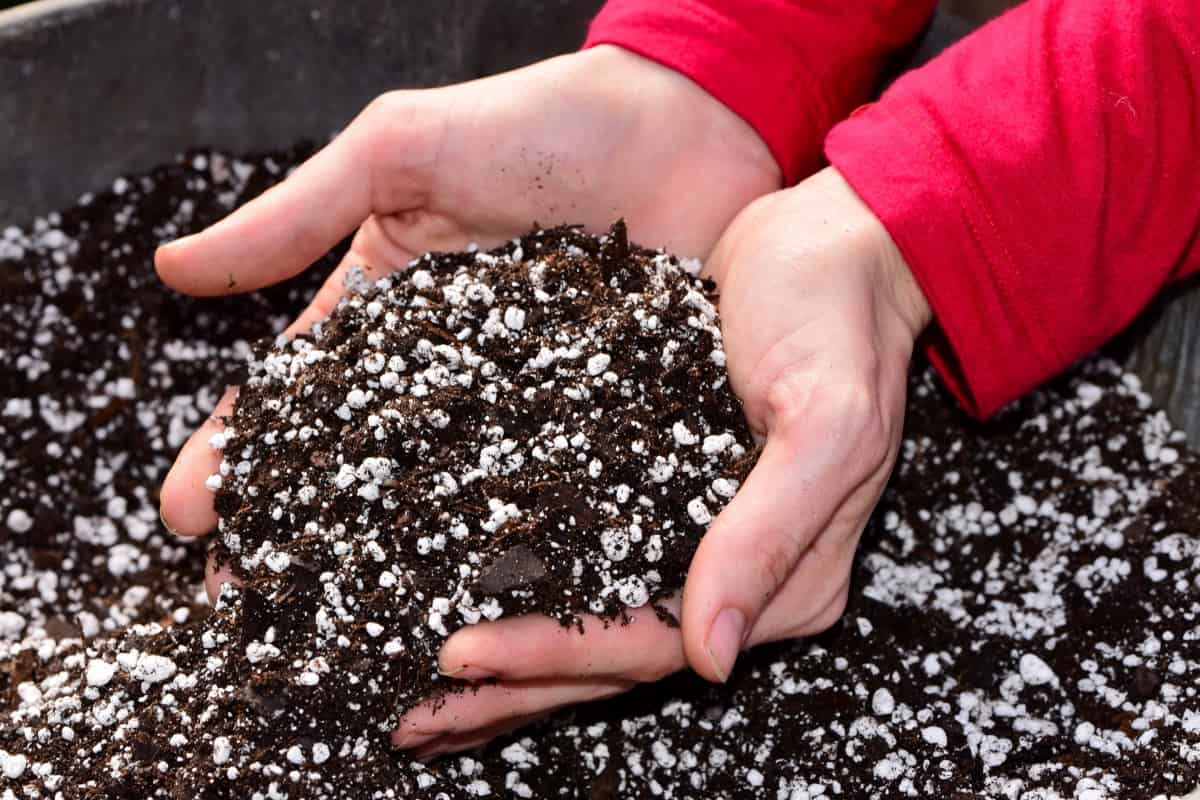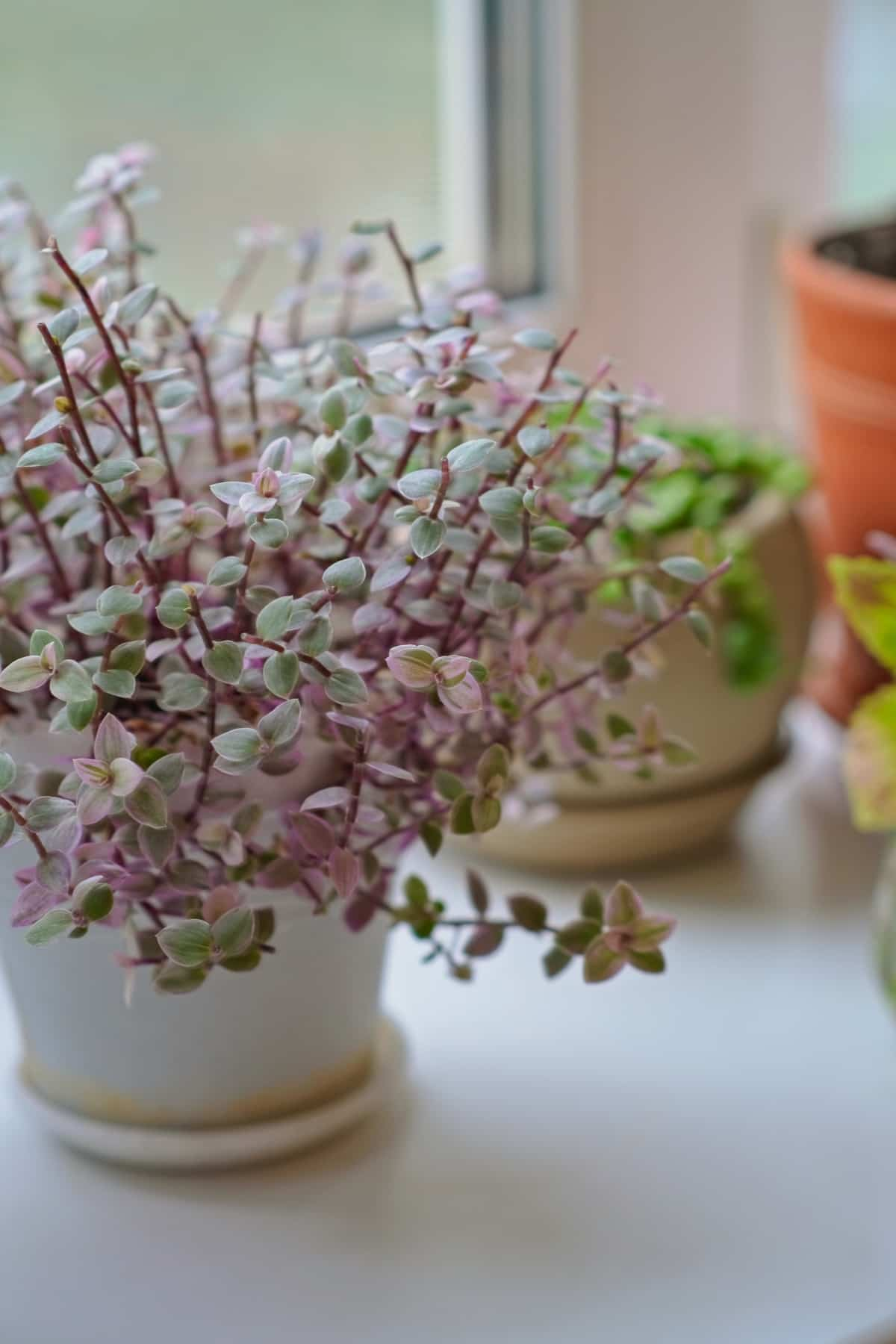The Pink Panther Plant, also known as Tradescantia Callisia “Pink Panther,” is a fast-growing, low-maintenance houseplant that thrives in bright but indirect light. Originating from Central and South America, it brings exotic beauty into your home. The Pink Panther plant is perfect for novice and experienced gardeners with its fast-growing nature and low-maintenance requirements.
Pink Panther Plant Care
Understanding the Pink Panther Plant: Origins, Characteristics, and Varieties
The Pink Panther plant originates from the tropical rainforests of Southeast Asia. With its lush green leaves speckled with vibrant pink spots, it adds a touch of exotic beauty to any indoor space. One of the most striking features of the Pink Panther plant is its unique foliage. The leaves are elliptical in shape, glossy, and can grow up to 8 inches long.
What sets this plant apart is its mesmerizing pink variegation that seems hand-painted on each leaf. The intensity of the pink spots may vary from plant to plant, giving them their distinct personality. While there are different varieties of Pink Panther within the Aglaonema genus, such as Aglaonema ‘Pink Valentine’ and Aglaonema ‘Emerald Beauty,’ all share similar care requirements. However, each variety has subtle differences in leaf coloration or pattern, making them captivating indoor additions.
Information About Pink Panther Plant
| Common Name | Pink Panther |
| Light | A maximum of one hour of full sun each day |
| Soil | Moist and quickly draining |
| Water | Soak and allow to dry out before watering again |
| Humidity | Enjoys humidity |
| Fertilizer | Every few months during the growing season |
Soil and Potting Mix: Creating the Perfect Growing Medium for Pink Panther Plants
The soil and potting mix you choose for your Pink Panther plants can greatly influence their health and growth. These plants require a well-draining medium that retains enough moisture without waterlogging. To create the perfect growing medium, start with a high-quality potting mix specifically formulated for indoor tropical plants. Avoid using heavy garden soil or compost, as they may not provide adequate drainage.

When repotting your Pink Panther plant, choose a pot and make drainage holes to allow excess water to escape. A size slightly larger than its current one should be sufficient, as these plants prefer snug root conditions. Creating a well-balanced growing medium will give your Pink Panther plant an ideal foundation for healthy growth and vibrant foliage.
Choosing the Right Environment: Optimal Light, Temperature, and Humidity for Pink Panther Plants
Choosing the right environment for your Pink Panther plant is important to its health and growth. These stunning plants thrive in bright, indirect light, making them perfect for placement near a north or east-facing window. Pink Panther plants prefer a warm and consistent climate. Ideally, keep your plant in an area with temperatures ranging from 15-24°C.
Steer clear of cold drafts or sudden temperature fluctuations as they can stress the plant. Humidity is another important factor when caring for your Pink Panther plant. These tropical beauties enjoy moderately high humidity levels between 40-60%. Place a humidifier nearby to increase humidity around the plant, or use a pebble tray filled with water. Misting the leaves occasionally also helps maintain adequate moisture levels.
Watering Techniques: Proper Hydration for Healthy Pink Panther Plants
Always check the soil’s moisture level before reaching for that watering can. Stick your finger about an inch into the soil – if it feels dry, then it’s time for a drink; if it’s still slightly damp, hold off on watering. When it comes to actually watering your Pink Panther plant, make sure to give it a thorough soak each time. This allows the roots to absorb enough moisture without leaving stagnant water in the pot.
Remember that overwatering the Pink Panther is one of the biggest mistakes you can make with these plants. They are susceptible to root rot if left sitting in soggy soil for too long. To prevent this issue, ensure that there are drainage holes in their pots and use a well-draining soil mix. Reduce watering frequency during winter or dormancy periods when growth slows down to avoid waterlogging. Conversely, during warmer months or active growing seasons, be prepared to increase watering as needed.
Fertilizing the Pink Panther Plant: Nutrient Requirements and Feeding Schedule
Fertilizing is an essential part of caring for your Pink Panther plant. Understanding its nutrient requirements and establishing a feeding schedule will help ensure its healthy growth and vibrant foliage. Pink Panther plants thrive in well-draining soil that is rich in organic matter. When it comes to fertilization, they prefer a balanced formula with equal parts nitrogen (N), phosphorus (P), and potassium (K).
In case you missed it: Potted Palm Care: For Palm Plants Indoor Care and Palm Plant Care Outdoor

Feed your Pink Panther plant once every 2 weeks during the growing season, which spans spring to summer. Dilute the fertilizer based on the manufacturer’s instructions before applying it to moist soil. In autumn and winter, when growth slows down, reduce the frequency of fertilization to once a month or suspend it altogether. This allows the plant time to rest during its dormant period.
Pruning and Propagation: Maintaining Shape and Expanding Your Pink Panther Plant Collection
Inspect your Pink Panther plant for dead, damaged, or overgrown branches. These should be carefully pruned away using clean and sharp pruning shears. Make clean cuts above a leaf node or bud to encourage new growth. In addition to regular pruning, propagating your Pink Panther plants can help you create more beautiful specimens for your collection. One popular method is stem cuttings.
Cut from a healthy branch with at least two nodes, remove any lower leaves, and dip the end carefully in rooting hormone before placing it in a well-draining potting mix. Another technique is division, separating the plant into smaller sections with their root systems. By regularly pruning and propagating your Pink Panther plants, not only can you maintain their desired shape.
Common Pests and Diseases: Identifying, Preventing, and Treating Issues in Pink Panther Plants
Pink Panther plants are known for their vibrant foliage and stunning appearance. However, like other houseplants, they can be susceptible to pests and diseases. It’s important to identify these issues early on so that you can take the necessary steps to prevent further damage. One common pest that may affect your Pink Panther plant is spider mites. These tiny creatures love dry conditions and can quickly infest your plant if not addressed promptly.
Look out for webbing on the leaves or specks moving around – these are telltale signs of a spider mite infestation. To tackle this problem, try misting your plant regularly to increase humidity levels or use an insecticidal soap specifically formulated for spider mites. Another pesky invader is mealybugs. These white cotton-like insects love hiding in crevices between leaves and stems, sucking sap from the plant as they go along.
If you notice a sticky residue or small fuzzy bugs on your Pink Panther plant, it’s likely a mealybug issue. You can remove them manually or use neem oil as an organic alternative. Fungal diseases may also occur on Pink Panther plants if conditions are too humid or there is poor air circulation around the leaves. This appears as a white powdery substance on the foliage surface.
To prevent its spread, ensure you water at the base of the plant instead of overhead watering, and ensure good ventilation around your pink panther plants by keeping them away from crowded areas. By staying vigilant and regularly inspecting your Pink Panther plants for any signs of pests or diseases, you can address these issues promptly before they become severe problems.
Pink Panther Plant Dying: Why It is Happening and How to Fix It?
There can be several reasons why a Pink Panther plant may start dying. One common issue is overwatering, which can lead to root rot and kill the plant. Ensure you provide adequate drainage for your Pink Panther plant and allow the soil to dry. On the other hand, underwatering can also cause wilting and yellowing leaves. Find a balance by monitoring your plant’s moisture needs.
In case you missed it: Inch Plant Care: Pruning, Propagation, and Fertilizer

Another cause could be improper lighting conditions. While Pink Panther plants prefer bright, too much direct sunlight can scorch their delicate foliage. Move your Pink Panther plant away from intense light sources, or use sheer curtains or blinds to filter out excessive sunlight. Inadequate nutrition might also contribute to a dying Pink Panther plant. Ensure you feed it regularly with a balanced houseplant fertilizer during its growing season (spring through summer). Follow the manufacturer’s instructions for dosage and frequency carefully.
Conclusion
The Pink Panther plant is a stunning houseplant that can easily be propagated by cutting and planting stems. One of the major advantages of growing the Pink Panther plant is its ability to improve air quality. Another benefit of growing the Pink Panther plant is its low-maintenance nature. With proper watering and indirect sunlight, this resilient plant will thrive without much effort on your part.
- Ultimate Guide to Ossabaw Island Hog: Breeding, Raising, Diet, and Care
- Ultimate Guide to Juliana Pig: Raising Facts, Size, Diet, Care, and Lifespan
- Raising Lleyn Sheep: Disadvantages, Price, Uses, Characteristics, and Care
- Ultimate Guide to Meishan Pig: Breed Facts, Breeding, Raising, and Care
- Ultimate Guide to Teacup Pigs: Raising, Diet, Lifespan, Cost, and Care
- Guide to Raising Poll Dorset Sheep: Facts, Profile, Characteristics, Uses, and Care
- Ultimate Guide to Bighorn Sheep: Characteristics, Diet, Lifespan, Breeding, and Lifecycle
- Ultimate Guide to Raising Katahdin Sheep: Farming Facts, Breed Profile, Uses, and Care
- Ultimate Guide to Raising Oreo Cows: Belted Galloways Farming Facts, Profile, Uses, and Care